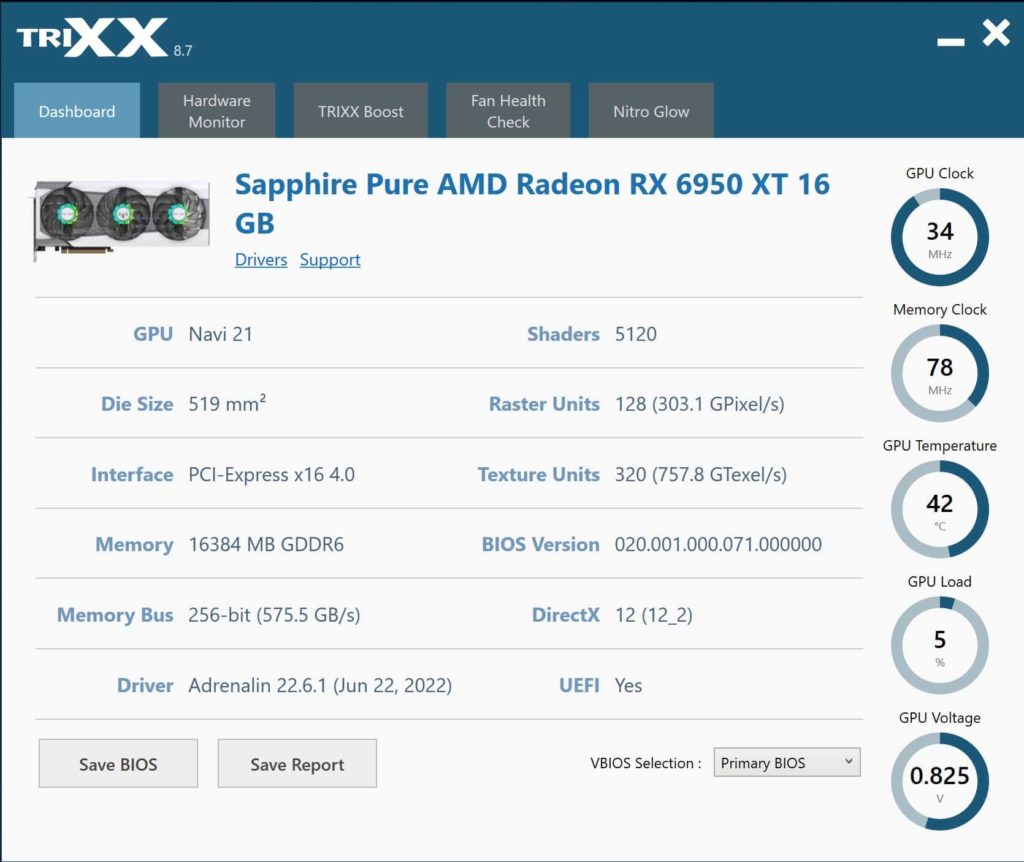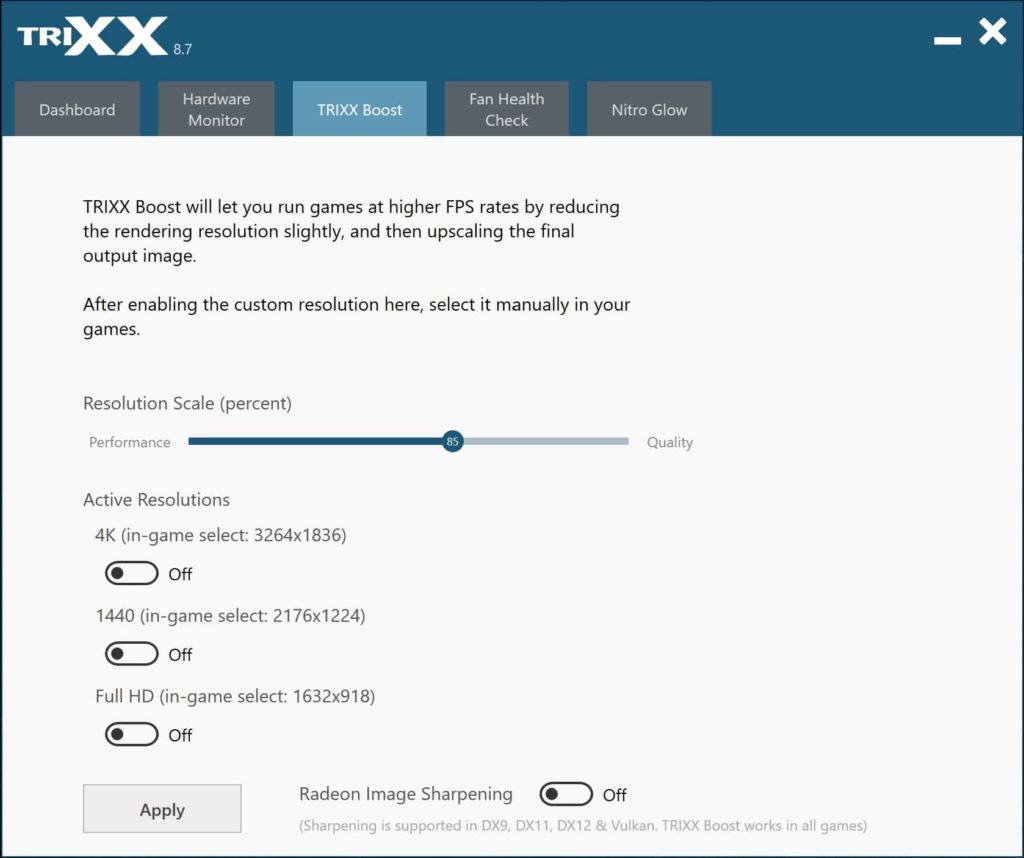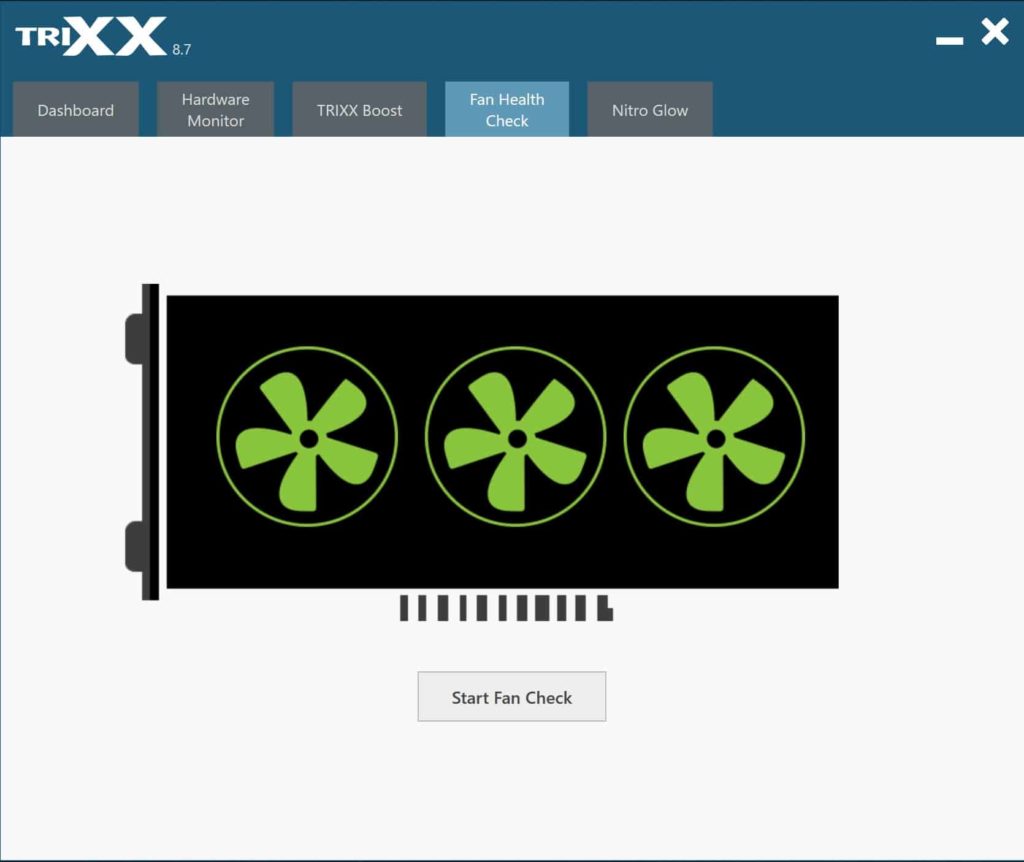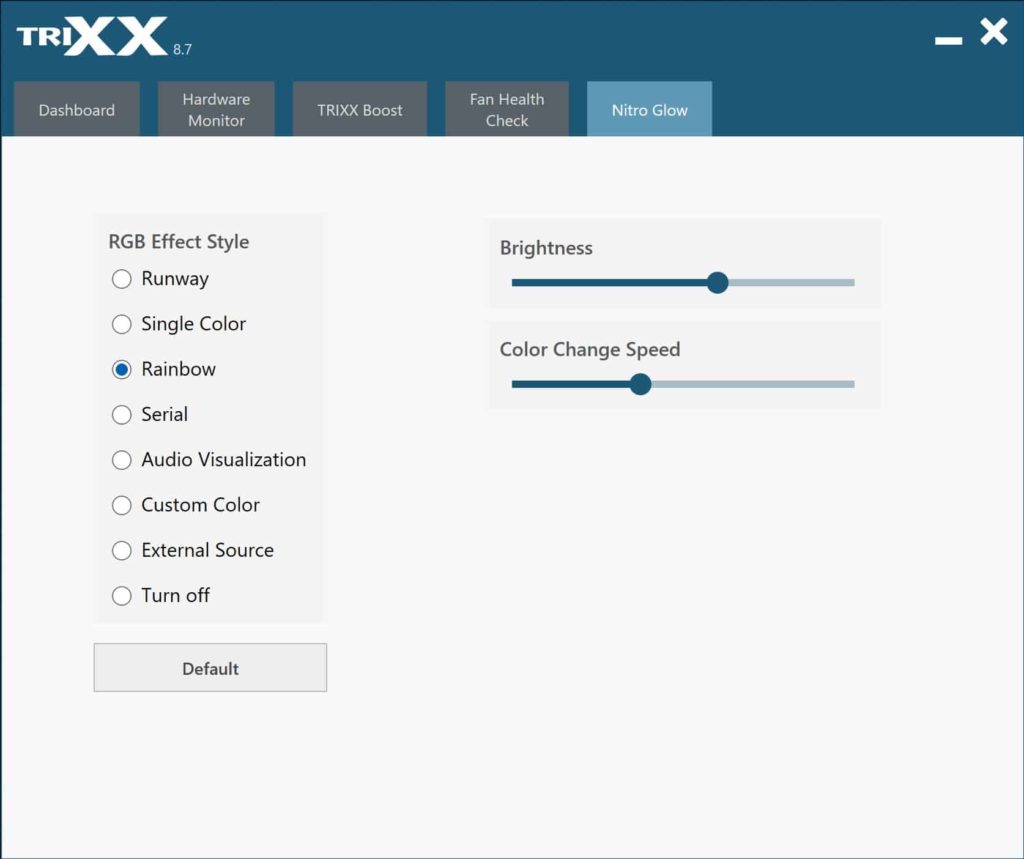Overclocking SAPPHIRE NITRO+ RX 6950 XT PURE
Default
Before we find the highest stable overclock, we need to find out what the default GPU clock speed of the video card is. With both NVIDIA and AMD GPUs, the GPU frequency is dynamic. NVIDIA has GPU Boost, and AMD has its same Clock and Boost Clock quoted frequencies. Typically, GPUs today can exceed the “Boost Clock” dynamically. We need to find out what it actually runs at, so we can compare the benefit of overclocking. To do this we will record the GPU clock frequency over time while playing a game. We use Cyberpunk 2077 for this with a very long manual run-through at “Ultra” settings recording GPU-Z sensor data.
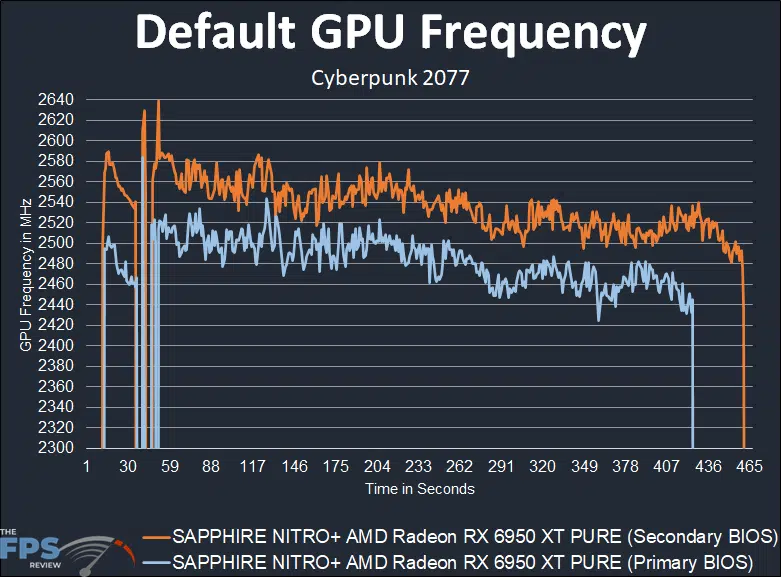
On this video card, there are two BIOS. The default BIOS, called the “Primary BIOS” is what the card will ship in, the Game Clock is set at 2162MHz and the Boost Clock is set at 2368MHz. The “Secondary BIOS” also called the OC BIOS can be selected and sets the Boost Clock up to 2435MHz. In the graph above, we are showing what both BIOS do in terms of real-world clock speed while gaming, so you can see the actual frequency and the difference between the BIOS. The “Primary BIOS” is the blue line and the OC BIOS is the orange line.
The default primary BIOS clock speed starts off around 2500MHz, but slowly drops to average out to around 2460MHz on average. That’s well above the Boost Clock for the Primary BIOS. Switch the BIOS into OC mode and that increases the frequency to end up around 2500-2520MHz, which is well above the OC BIOS Boost Clock. This means either way the video card is operating well above the Boost Clock while gaming, giving you higher performance. The OC BIOS has a real advantage in clock speed as well and will definitely give you a boost in performance for free without overclocking.
Overclocked
To overclock the SAPPHIRE NITRO+ AMD Radeon RX 6950 XT PURE video card we are using AMD Radeon Software Performance Tuning overclocking software. This is our highest stable overclock shown below.
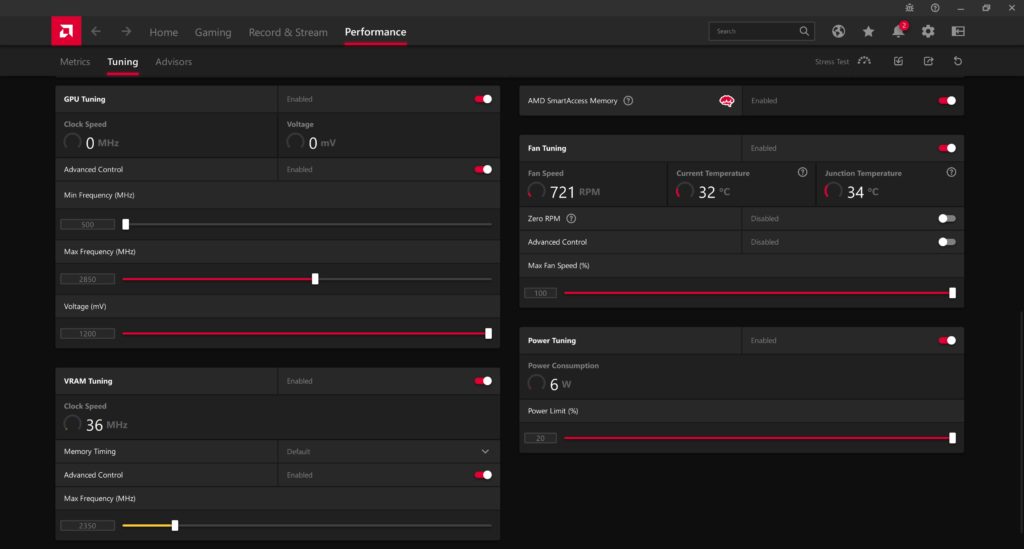
Firstly note, that we are overclocking on the OC BIOS, with the OC BIOS selected. We were happy to find that the Power Limit could be set very high on this video card. We were able to increase it by +20% which is higher than normal. This will give us plenty of headroom and TDP for overclocking. We were also able to max out the fan speed to ensure the highest overclock. In addition, we had plenty of headroom on the sliders for both memory and GPU overclocking, we were not restrained or restricted in any way.
Our final overclock ended with a “Max Frequency” set at 2850MHz, yes 2850MHz, way over the reference specs here. To see what that translates into real-world gaming frequency, look below. On the memory, we were able to increase it from 18GHz to 18.8GHz. The memory is the one that didn’t overclock as high as we were hoping, it appears to be maxed out pretty well from the get-go. It is the GPU core on this one that really got the highest overclock.

In this three-comparison graph, we are looking at the Primary BIOS versus Secondary BIOS versus manual Overclock (orange bar) on this graph. You can see that our manual overclock with the slider set at 2850MHz is just an absolutely incredible overclock. Our graph here shows that while gaming the frequency is sitting right under 2800MHz consistently, not dropping down at all as it does normally. With the Power Limit increased, the GPU clock frequency is able to be maintained more consistently than at default. At 2800MHz our GPU overclock is well over 10%, sitting at around 13-14% GPU overclock, or over 300MHz. With the memory at 18.8GHz, the memory bandwidth also increases to 601GB/s versus 575GB/s. This is a really high GPU overclock.
SAPPHIRE TRIXX Software
